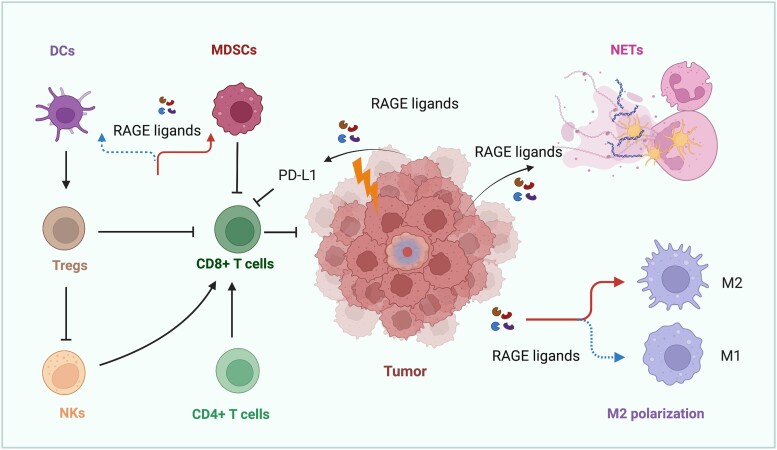Figure 4.
RAGE-dependent immune evasion toward cancer progression. RAGE activation by ligands induces differentiation of M2 macrophages and their accumulation, leading to the suppression of anticancer immunity due to multiple mechanisms (ie, activation of TREG cells, inhibition of NK and CD8+ T cells). Likewise, RAGE ligands released by cancer cells exposed to radiotherapy and chemotherapy stress induce the expression of the immune checkpoint PD-L1, thereby hindering CD8+ T cell–dependent cytotoxicity. Similarly, RAGE ligands inhibit DCs and mobilize MDSCs to halt immune recognition. Parallel, RAGE ligands induce the formation of NETs, which facilitate tumor progression. Abbreviations: DCs, dendritic cells; M2, M2-like macrophages; MDSCs, myeloid derived suppressor cells; NETs, neutrophil extracellular traps; NKs, natural killer cells; PD-L1, programmed death-ligand 1; RAGE, receptor for advanced glycation end products; TREGs, T regulatory cells.

